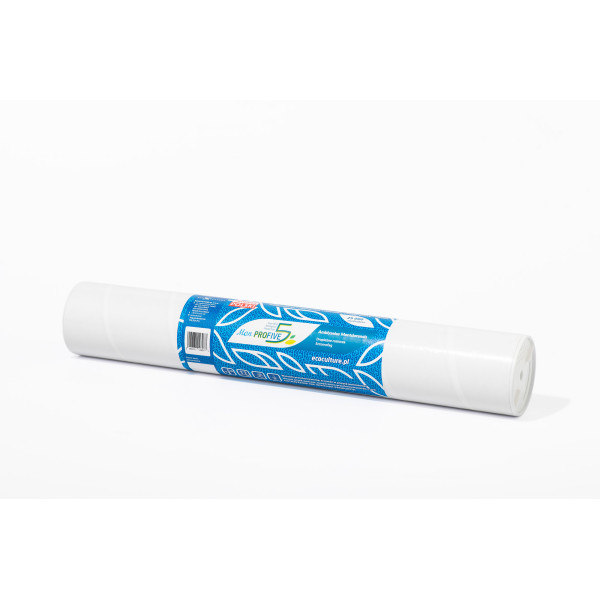What is MON PRO5?
Transeius montdorensis (formerly known as Amblyseius montdorensis) is a species of predatory parasitic mites from the family Phytoseiidae, used as a biological control agent in protected cultivation. Along with Amblyseius swirskii, it is one of the most widespread predators providing comprehensive control of thrips and whiteflies. This predator can reproduce rapidly and survive in the absence of prey by feeding on pollen, making it an extremely effective plant protection tool. Importantly, Transeius montdorensis is active above 14°C, so it shows greater efficacy in controlling thrips and whiteflies compared to Amblyseius swirskii during cooler periods. Like other predatory mites, it does not cause damage to plants and has no negative impact on the environment, making it safer than chemical pesticides.
Life cycle.
The life cycle of Transeius montdorensis includes the following stages: egg, larva, nymph, and adult. Typically, females lay eggs (approximately 0.14 mm in diameter) on the lower side of leaves, where they may be visible to the naked eye. After a few days, the eggs hatch into larvae that prey on small insects such as thrips larvae and spider mites. After several molts, the larvae transform into nymphs, which continue actively hunting pests. The nymphs then develop into adult individuals measuring 0.5-0.6 mm in length, which also feed on pests and reproduce. The complete life cycle of the predatory mite depends on temperature and humidity and can range from 10 to 22 days.
Pests.
Transeius montdorensis feeds on various pests, including thrips, whiteflies, spider mites, and other small insects, but it primarily targets thrips and whiteflies. Therefore, it is used for controlling greenhouse whitefly (Trialeurodes vaporariorum), tobacco whitefly (Bemisia tabaci), western flower thrips (Frankliniella occidentalis), onion thrips (Thrips tabaci), Heliothrips haemorrhoidalis, and others.
The predatory mite prefers to feed on first-stage thrips larvae but will also prey on second-stage larvae in their absence. Under optimal conditions, a single individual can consume up to 10 thrips larvae in a day. For whiteflies, it feeds on eggs and larvae (destroying up to 20 eggs or 15 larvae of the pest daily). Additionally, it can assist in the control of spider mites.
In the absence of prey, the predatory mite can sustain its population by feeding on plant pollen. Therefore, it is highly promising in crops with abundant pollen. The high efficacy of Transeius montdorensis in controlling these pests has been confirmed through years of practical use.
Crops.
Transeius montdorensis is used in a wide range of crops, including:
• Vegetables: cucumber, bell pepper, eggplant, zucchini, etc.
• Berry crops: strawberry, raspberry, blackberry, blueberry, etc.
• Ornamental plants: rose, chrysanthemum, gerbera, poinsettia, calla lily, anthurium, etc.
The use of Transeius montdorensis on tomatoes is not recommended. This is because this species is a surface predator, and its effectiveness depends on the availability of pests for hunting and feeding. On plants with dense trichomes, such as tomatoes, it has difficulty moving and pursuing its prey. In such cases, other biological control methods are recommended.
Application.
It is recommended to introduce the mites in the early growth stage of the plants so they can effectively control pests throughout the season. Just before introducing the biological agent into the greenhouse, thoroughly mix the product (cardboard tube or paper bag) by rotating it for several minutes around its axis - this will ensure a more even distribution of the predator and thereby increase its effectiveness.
Transeius montdorensis is applied to the crop by gently sprinkling the carrier material containing the predatory mites onto the substrate or directly onto the plant leaves. Regardless of the application method, it is important to monitor the temperature and humidity to provide optimal conditions for the survival of the bioagent. The predatory mite is most effective at temperatures ranging from 20 to 32°C. Transeius montdorensis is also sensitive to relative humidity below 70%.
Application rates.
Optimal application rates for Transeius montdorensis may vary depending on various factors such as the crop type, pest species, infestation level, presence of other control methods, etc. Typically, these rates range from 25 to 300 predatory mites per 1 m². The procedure should be repeated every 7-14 days.
Please note that optimal application rates may vary depending on multiple factors, so it is advisable to consult with our company's experts before using Transeius montdorensis to develop an optimal protection strategy in your specific case.
Storage.
Storage of Transeius montdorensis should follow specific guidelines to ensure maximum effectiveness of the biological control agent. Here are a few recommendations:
• Store the product in a horizontal position in a cool place protected from direct sunlight, at a temperature of 12-14°C.
• Storing Transeius montdorensis in a refrigerator or freezer is prohibited, as it can lead to the death of the bioagents.
• The maximum storage period for the product from the time of receipt is 1-2 days.
• It is important to remember to avoid contact with pesticides during the storage of Transeius montdorensis.
There are no reviews for this product, be the first to leave your review.

